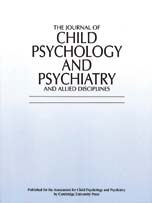Which Aspects of ADHD Are Associated with Tobacco Use in Early Adolescence?
Published online by Cambridge University Press: 04 June 2001
Abstract
Several studies have found a relationship between attention-deficit hyperactivity disorder (ADHD) and substance use, primarily in the context of co-occurring conduct disorder (CD). However, very few have examined the associations between the individual dimensions of ADHD (hyperactivity-impulsivity and inattention) and substance use, even though these dimensions reflect distinct symptom groupings, both by clinical definition (DSM-IV, American Psychiatric Association, 1994) and through empirical demonstration (Lahey et al., 1988; McBurnett et al., 1999). This longitudinal study examines the relationship between dimensions of ADHD (as described by DSM) and substance use, accounting for other psychopathology and factors potentially related to substance use. Participants were 177 clinic-referred boys (initially between ages 7 and 12) followed up over nine annual phases until all participants had reached age 15. Annual assessment included structured clinical interviews with parent and child and self-report questionnaires of substance use, as well as questionnaires related to family factors and parenting behaviors. Seventy-eight per cent of participants reported use of tobacco, alcohol, marijuana, or other illicit drugs during adolescence, with 51% reporting any tobacco use. The inclusion of CD rendered all bivariate relationships with the full diagnosis of ADHD nonsignificant. However, adolescent inattention, considered independently, was associated with a 2·2 times greater risk for concurrent tobacco use, even after controlling for CD. Even when other factors, selected based on their associations with tobacco use in adolescence, were included in a regression model (concurrent adolescent CD odds ratio [OR] = 6·08), duration of tobacco use by age 12 (OR = 5·11), poor parental communication in childhood (OR = 2·9), African-American ethnicity (inversely predictive; OR = 0·15), inattention (OR = 2·3) remained significantly associated with tobacco use in early adolescence. These findings highlight the importance of considering the risks for comorbid substance use separately by individual dimensions of ADHD.
- Type
- Paper
- Information
- The Journal of Child Psychology and Psychiatry and Allied Disciplines , Volume 42 , Issue 4 , May 2001 , pp. 493 - 502
- Copyright
- © 2001 Association for Child Psychology and Psychiatry
- 108
- Cited by


